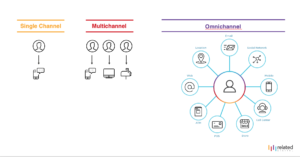Behavioral Targeting: How and Why You Should Use It

Marketing can often feel like grasping at straws. Businesses sometimes feel like they must throw everything at the wall and see what sticks. Sure, demographic data is useful, but how can you be certain that your messaging will result in significant engagement from your audience? Rather than develop promotions and materials that can feel downright arbitrary to customers, marketers have found a better way: designing irresistible offers, deals and campaigns with behavioral targeting.
What is Behavioral Targeting?
Behavioral just what it sounds like: using data from user behaviors to better target them with advertisements, deals and more. Behavioral advertising, for example, thrives on defining actions and tracking events to better contextualize an offer—for example, reminding a shopper about an abandoned shopping cart and giving them a coupon to help in completing the purchase. The most common types of data used in behavioral targeting advertising include tracking past purchases, clicks and heat maps, user location or the device they’re using. Behaviors aren’t limited to what the user does on your website or service. With cookies, you can even track behaviors such as web browsing or search histories.
Why Use Behavioral Targeting?
Because behavioral targeting is based on user behaviors and actions, it results in much more precise segmentations. And consumers love more accurate personalization; according to a report from Infosys, 74% of customers are frustrated by website content that isn’t personalized, and 59% say that their shopping decisions are influenced by personalization. This means behavioral targeting not only provides key insights on customers but improves the customer experience significantly as well. This results in both a better ROI and increase in customer satisfaction and sales.
Behavioral targeting is also an essential part in several more specific types of marketing. Common use cases include ad retargeting, persona-based marketing, email marketing and more. In nearly every form of digital marketing, you’re sure to find some behavioral targeting examples—which means it should be the backbone of your larger digital marketing strategy to be most effective.
One of the biggest benefits behavioral targeting yields is an increase in CTAs and conversions. When you’re able to make more realistic profiles on your customers, you can develop offers and deals for more specific demographics and niches. It goes without saying that customers are more likely to click and engage with things they find the most interesting. With behavioral advertising, you can better understand users based on their behavior, which leads to better business and increased customer satisfaction.
Behavioral Targeting Examples
Retargeting
Behavioral targeting can be used with several marketing strategies, but the most common retargeting. Some of the biggest behavioral targeting examples include tracking events such as abandoning shopping carts, unsubscribing from a service, upselling a purchase, onboarding and more. Whether used for email campaigns, social media advertising or advertising across the internet, behavioral targeting advertising can greatly strengthen your marketing strategies and increase conversions.
Targeting Customers at Every Stage of the Buying Cycle
One of the segments you can track with behavioral targeting is where the customer is in the buying cycle. This lets you better tailor behavioral advertising to different steps along the consumer journey. Volkswagen China used behavioral targeting this way by analyzing user behavior on their website, across social media and within their histories of email responses. Each user was then ranked based on various stages of the customer journey, answering questions such as:
- Who was ready for contact from the business?
- Which users required more nurturing first?
- Which users were simply seeking brand information without an immediate need?
After identifying these segments based on behaviors and using behavioral targeting advertising to speak to their needs, Volkswagen China saw a 50% increase in conversions.
Targeting Customer Interest
Another of the most common behavioral segmentation examples and use cases is targeting prospects based on their interests. This increases the contextual relevancy of ads and content, better accommodating customer needs and resulting in a better ROI. If you don’t believe, see how GE used behavioral targeting to generate stellar content.
First, GE launched “Art of Money,” a now-defunct blog targeting credit card and loan prospects. The website specialized in lifestyle content tailored to those trying to save money or learn better financial practices. So where does behavioral targeting come in? GE tracked users’ consumption of the content as well as which content they engaged with. This content was then paired with relevant product recommendations in real time. This resulted in a 10-fold increase in the likelihood that prospects would apply for the financial services offered.
In short, behavioral targeting makes it easy to gain sophisticated insights into your customers in several key areas: who they are, where they are, what makes them tick and where they are along the consumer journey. Easily implemented into different aspects of marketing—from email retargeting to product recommendations and more—behavioral targeting can be a powerful tool in your marketing arsenal



